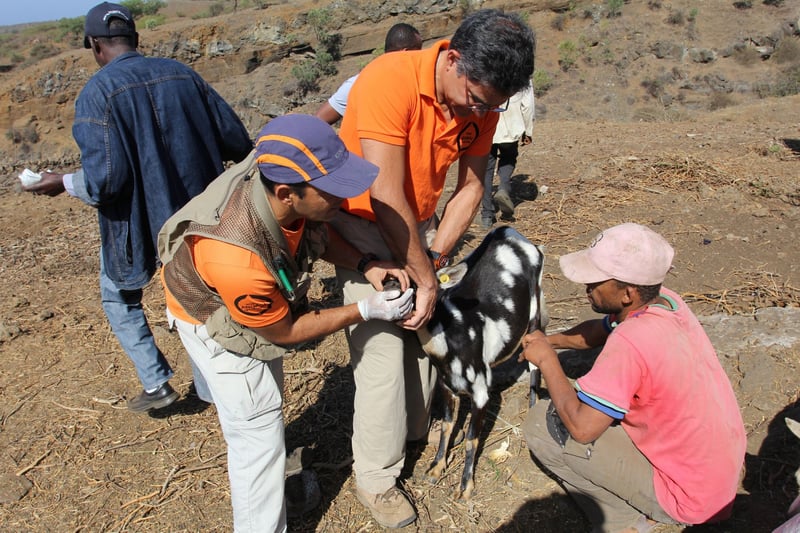
5 quick questions with Gerardo Huertas
News
Gerardo Huertas (international Director of Disaster Management, World Animal Protection) has been working in our Disasters programme area for 35 years.
Gerardo and his team move fast to protect animals when disasters strike – reducing animal suffering and helping governments and communities recover and reduce risk.
You’ve been doing this for 35 years. Have you seen a difference in disasters in the time you’ve been working on them?
A huge difference. Thirty-five years ago we were an oddity. Now, people expect us to be there when disaster strikes. Most humanitarian partners expect animals to be rescued, provided relief, and helped, just like the owners of those animals do.
With over 50 years’ experience and more than a dozen professionals dedicated full time to this job, the quality of the relief we provide to each and every animal in need is the best in the business.
A study from 2015 found that half of disasters are linked to climate change. What are some of the effects we can expect on disasters as the climate changes?
That study is outdated – unfortunately it is probably more than that now.
As the climate changes, our previous knowledge goes down the drain. For example, a year or two ago weather scientists indicated that hurricanes in the Caribbean were going to be less in number yet more violent and unpredictable. There is only so much communities and governments can do to prepare for giant, monstrous hurricanes.
Droughts are happening more often as humans push fragile ecosystems over the edge. They affect people and their animals by the millions, and leave scars that last years and decades. Helping drought-affected animals is very difficult, so we are encouraging people to focus on reducing risk.
Are animals more vulnerable to disasters?
By all means. Being affected by floods, drought or volcanoes is bad enough, but this is compounded when owners don’t have preparedness plans or there are no official mechanisms to assess animal impact and provide relief.
What is World Animal Protection doing to protect animals faced with worsening disasters?
Currently, World Animal Protection can deploy up to six teams into the field in vulnerable countries around the world.
We are also working with the UN to help national governments protect farm and working animals from disasters by reducing the risks threatening them. In big cities, we will work with governments and pet owners to do the same for pets, by promoting preparedness.
Our target is to have aided 5 million animals caught in disasters around the world by 2020. We are making progress – now it’s time to pick up the pace.
How can animal owners protect their animals?
Sit down and write up a plan. Only you can identify and reduce the risks to your animals. When emergencies strike, animals need an evacuation plan, a first aid kit, water and food provisions.
You should also make sure your vaccination records are up to date to avoid secondary infections, and that your animals are properly identified in case you are separated.
Currently, World Animal Protection can deploy up to six teams into the field in vulnerable countries around the world.